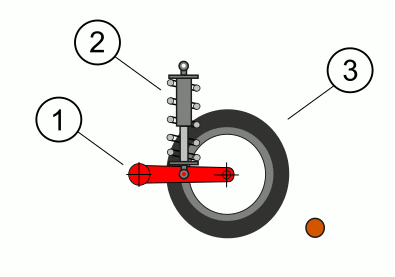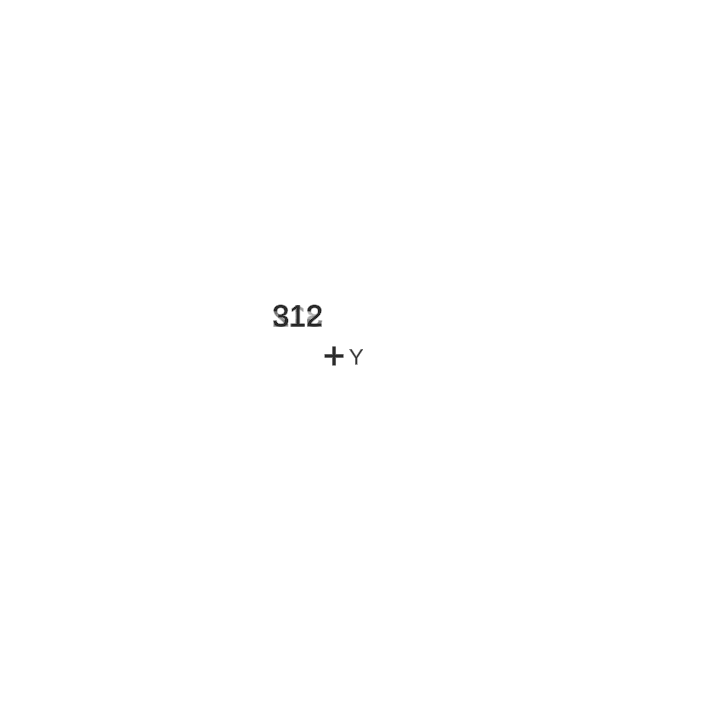I'm not gonna fix the image, cuz i don't want to repost it.
Instructions and notes
Switch to gunner sight to aim.
Pitch and roll to drive
Deactivate 8 to retract commander
Notes: Best to use it above low physics
Also the gun depression is good because of a weird mechanism, you'll see.
The top mg aims up to let the hatch to close fully and allow the commander to grab it quicker when "buttoning down"
Rockets stored in the back of the turret to simulate being "ammoracked"
There is a half assed interior.
Lore
emerged in 1943 as a significant departure from its predecessors in the Wehrmacht's light reconnaissance tank series. Originally intended to be a continuation of the PzSpWg II Ausf. B, extensive modifications and upgrades warranted its redesignation as the third model in the series. This vehicle combined the agility and reconnaissance capabilities of light tanks with the firepower and mobility typically reserved for heavier counterparts, making it a formidable asset on the battlefield.
Design and Development
The PzSpWg III Ausf. A's development was driven by the need to address the limitations of the PzSpWg II Ausf. B. The earlier model, equipped with a 7.5 cm Pak 40 gun and a less powerful variant of the Maybach HL210 engine, fell short in firepower and performance. Additionally, the Ausf. B suffered from significant brake issues that affected its reliability in the field. The Ausf. A sought to rectify these shortcomings with a series of substantial upgrades.
Armament
The most striking enhancement was the integration of the 8.8 cm KwK 36 gun, a renowned weapon famously used in the Tiger I heavy tank. This upgrade provided the PzSpWg III Ausf. A with unparalleled firepower for a vehicle of its class, allowing it to engage a wide range of targets, including heavily armored enemy tanks, with considerable effectiveness.
Mobility
To support the heavier armament and overall weight, the Ausf. A was fitted with the full version of the Maybach HL230 P45 engine, delivering 650 horsepower. This engine, shared with the Tiger I, ensured that the PzSpWg III Ausf. A maintained impressive mobility despite its increased size and weight. The vehicle's chassis was lengthened, its front extended, and its overall width increased, providing a more stable platform and better weight distribution.

Suspension and Tracks
The suspension system of the PzSpWg III Ausf. A was also upgraded. An additional road wheel was added, bringing the total to five per side, compared to the four on the PzSpWg II Ausf. B. This modification, along with slightly wider tracks, enhanced the tank's ability to navigate difficult terrain, crucial for reconnaissance missions.
Brake System
One of the critical improvements in the PzSpWg III Ausf. A was the resolution of the brake issues that plagued the PzSpWg II Ausf. B. The new braking system was more reliable and efficient, significantly enhancing the vehicle's operational reliability and safety. This upgrade ensured that the Ausf. A could handle its increased weight and power without compromising control, especially in challenging terrains and during high-speed maneuvers.
Operational Role
In its operational role, the PzSpWg III Ausf. A was designed to excel in both reconnaissance and combat support. Its powerful armament allowed it to engage enemy forces effectively, providing valuable fire support to infantry and other armored units. Meanwhile, its enhanced mobility and off-road performance, courtesy of the Christie suspension and improved braking system, made it ideal for scouting missions where speed and agility were paramount.
Major Karl Schneider: The Soviet Tank Hunter
In the summer of 1943, Major Karl Schneider, a renowned German tank commander, received his upgraded PzSpWg III Ausf. A. Tank No. 312, part of the 7th Panzer Division, was now equipped with the formidable 8.8 cm KwK 36 gun and the powerful Maybach HL230 P45 engine. As the Eastern Front raged on, Schneider's mission was clear: hunt Soviet heavy tanks.

Schneider, known for his tactical brilliance, quickly adapted to his new machine. His crew, seasoned and loyal, trusted his every command. The PzSpWg III's Christie suspension and improved brakes gave them an edge in mobility and control, vital for their hit-and-run tactics against the Soviets.
The first major test came near Kursk. Schneider's unit encountered a group of Soviet IS-1 tanks. Utilizing the terrain and the tank's superior firepower, Schneider led a flanking maneuver. Within minutes, three IS-1 tanks were ablaze, their crews scrambling for safety. The PzSpWg III had proven its worth.

Throughout 1943 and into 1944, Schneider and his crew became legends. They destroyed a total of 3 KV-1s, 1 KV-2, 5 IS-1s, 3 IS-2s, 15 T-34-57s, and 7 T-34-85s. Each victory was hard-fought, with Schneider's tactics evolving with every encounter. He became known as the Soviet Tank Hunter, feared by his enemies.
As the tide of war turned against Nazi Germany, Schneider's skills were put to the ultimate test. By the end of 1944, the 7th Panzer Division was pushed back to Berlin. Despite the dire situation, Schneider's resolve never wavered. He continued to lead his crew with unwavering determination, knowing that every tank they destroyed delayed the Soviet advance.
In the chaotic streets of Berlin, Major Karl Schneider made his final stand. Tank No. 312, battered but not broken, became a symbol of his relentless spirit. His legacy as one of Germany's greatest tank commanders was cemented in the annals of history, a testament to the deadly effectiveness of the PzSpWg III Ausf. A and the bravery of its crew.
Specifications
General Characteristics
- Successors 1 airplane(s) +21 bonus
- Created On Android
- Wingspan 14.8ft (4.5m)
- Length 31.9ft (9.7m)
- Height 11.7ft (3.6m)
- Empty Weight 28,564lbs (12,956kg)
- Loaded Weight 46,287lbs (20,995kg)
Performance
- Wing Loading N/A
- Wing Area 0.0ft2 (0.0m2)
- Drag Points 7366
Parts
- Number of Parts 379
- Control Surfaces 0
- Performance Cost 2,083








only the display one
nothing....
the images broke